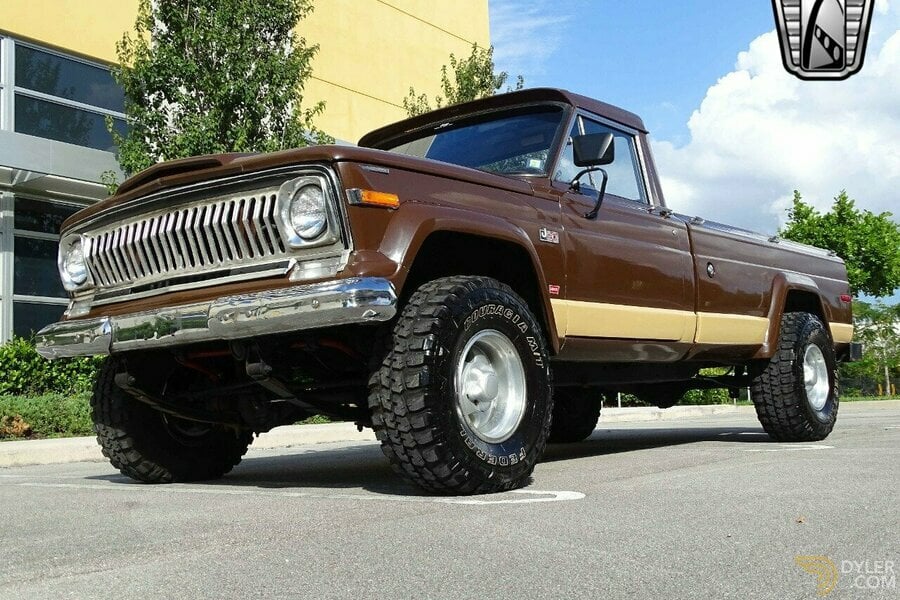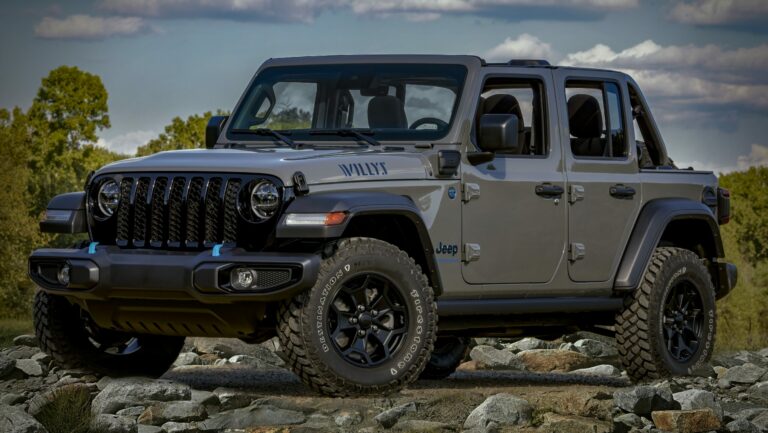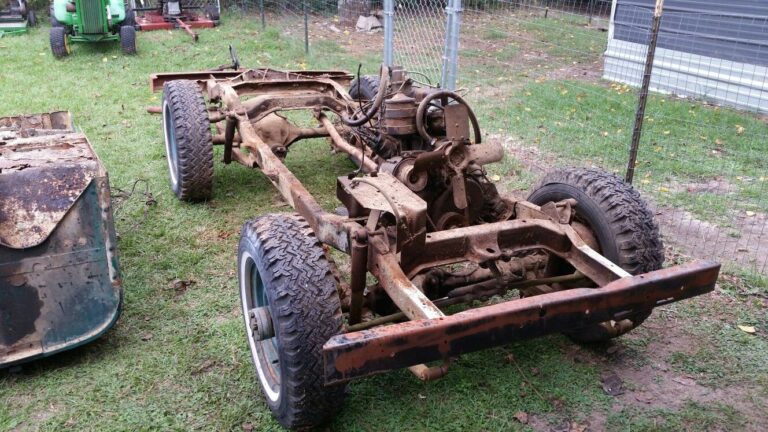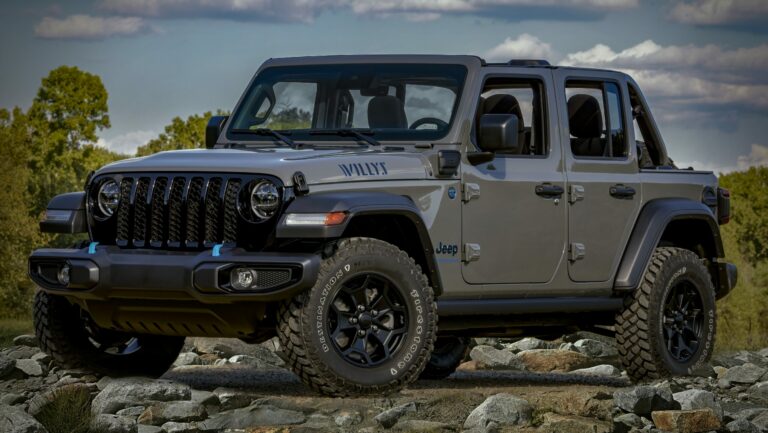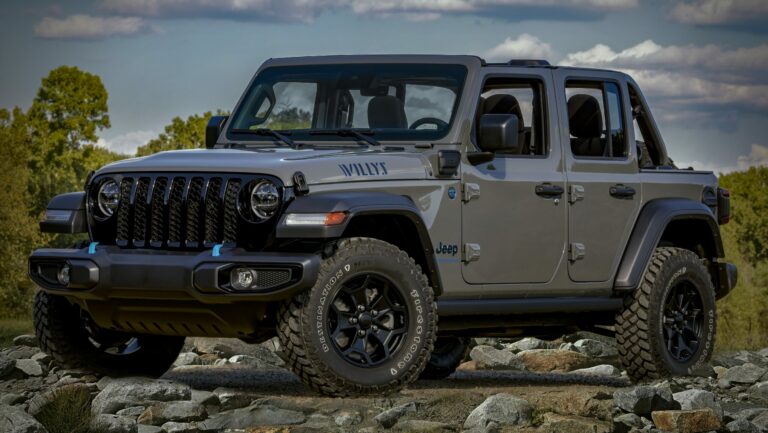1974 Jeep J20 For Sale: Your Comprehensive Guide to Owning a Vintage Workhorse
1974 Jeep J20 For Sale: Your Comprehensive Guide to Owning a Vintage Workhorse jeeps.truckstrend.com
In the pantheon of classic American trucks, few command the respect and admiration quite like the full-size Jeep J-Series. Among its rugged lineage, the 1974 Jeep J20 stands out as a true testament to utilitarian design, robust engineering, and an enduring spirit of adventure. For enthusiasts, collectors, or anyone seeking a unique and capable vintage vehicle, the prospect of finding a 1974 Jeep J20 for sale is an exciting journey into automotive history. This article aims to be your definitive guide, providing insights into its legacy, what to look for, how to buy or sell, and what to expect from these iconic machines.
The Enduring Legacy of the Jeep J-Series and the 1974 J20
1974 Jeep J20 For Sale: Your Comprehensive Guide to Owning a Vintage Workhorse
The Jeep J-Series trucks, often referred to as Gladiator or Wagoneer trucks, were produced by Kaiser Jeep and later by American Motors Corporation (AMC) from 1962 to 1988. These full-size pickups shared their architecture with the Wagoneer SUV, renowned for pioneering the luxury SUV segment. The 1974 model year falls squarely within the AMC era, a period where these trucks cemented their reputation for ruggedness and capability.
The J20, specifically, was the 3/4-ton heavy-duty variant, designed for more demanding tasks than its J10 counterpart. It offered increased payload and towing capacities, making it a favorite among farmers, tradesmen, and anyone needing a reliable workhorse. What sets the 1974 J20 apart today is its blend of classic aesthetics—distinctive grille, solid lines, and utilitarian cabin—with the proven mechanicals of the era. It’s not just a truck; it’s a piece of American industrial heritage, a symbol of an era when vehicles were built to last, not just to impress. Its appeal lies in its simplicity, its mechanical honesty, and its undeniable character.
Key Features and Specifications of the 1974 Jeep J20
Understanding the core attributes of the 1974 J20 is crucial for any potential buyer or seller.
- Engine Options: The primary powertrain for the 1974 J20 was the robust AMC V8 engine. Common options included the 360 cubic inch (5.9L) V8, known for its torque and durability, and less commonly, the more powerful 401 cubic inch (6.6L) V8. These engines, while thirsty by modern standards, were celebrated for their reliability and ease of maintenance.
- Transmission and Drivetrain: Buyers could typically choose between a manual transmission (often a 3-speed or 4-speed unit) or a robust automatic transmission (like the TH400). A defining feature was its formidable four-wheel-drive system, often equipped with Dana axles (Dana 44 front, Dana 60 rear for the J20), ensuring exceptional off-road capability and traction for heavy loads.
- Chassis and Suspension: The J20 utilized a sturdy body-on-frame construction, providing a strong platform for hauling and towing. Its heavy-duty leaf spring suspension, while firm, was designed to handle significant weight and rough terrain.
- Payload and Towing: As a 3/4-ton truck, the J20 boasted impressive payload and towing capacities for its time, making it a highly functional vehicle for work or recreation.
- Design and Interior: The exterior styling is unmistakably vintage Jeep, with a distinctive "razor" grille (though some later 74s might have transitioned to the "pig nose" or "Rhino" grille, depending on exact production date and market variations, the razor was iconic for this period). The interior was spartan but functional, prioritizing durability over luxury, featuring a simple dash, robust seating, and clear instrumentation.
Why Buy a 1974 Jeep J20 Today?
The allure of the 1974 J20 goes beyond mere nostalgia. There are several compelling reasons why these trucks continue to find new homes:
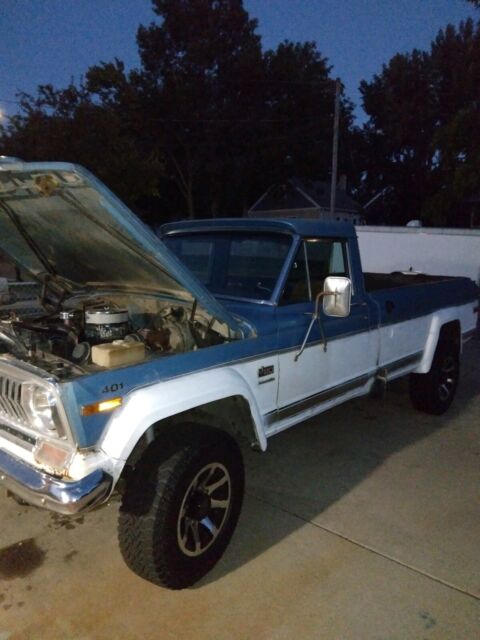
- Collector’s Item and Investment: Well-preserved or professionally restored J20s are increasingly sought after by collectors. Their rarity compared to more common classic trucks, combined with their unique Jeep heritage, can make them a wise investment.
- Unrivaled Utility and Ruggedness: These trucks were built tough. They can still haul, tow, and navigate challenging terrain with aplomb, serving as capable work trucks or adventurous off-roaders.
- Unique Classic Truck Appeal: In a sea of cookie-cutter modern vehicles, a vintage J20 stands out. Its distinctive styling and commanding presence turn heads and spark conversations.
- Restoration Project Potential: For those who enjoy hands-on work, a J20 can be a rewarding restoration project. Its relatively simple mechanicals and robust construction make it an accessible platform for a rebuild.
- Community and Support: Owning a classic Jeep means joining a passionate community of enthusiasts. Online forums, parts suppliers, and clubs dedicated to vintage Jeeps provide invaluable support and camaraderie.
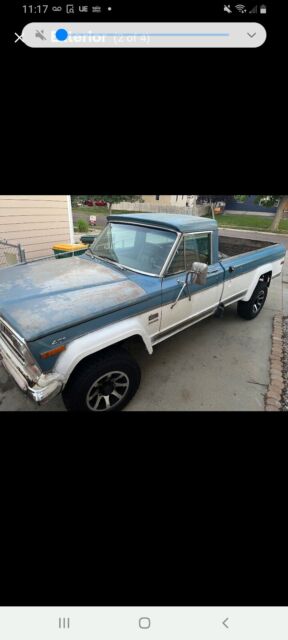
What to Look For When Buying a 1974 Jeep J20 (Inspection Guide)
When a 1974 Jeep J20 for sale catches your eye, a thorough inspection is paramount. These are old vehicles, and condition varies wildly.
- Rust, Rust, Rust: This is the primary enemy of vintage vehicles. Pay close attention to:
- Body Panels: Rocker panels, cab corners, fender wells, lower door seams, and the bed floor/sides.
- Frame: Inspect the entire frame for excessive surface rust, pitting, or worse, rot, especially around suspension mounting points and crossmembers.
- Underbody: Floorboards, bed supports, and fuel tank straps.
- Drivetrain Condition:
- Engine: Listen for knocking, excessive smoke (blue for oil, white for coolant, black for fuel), and obvious fluid leaks. Check oil and coolant levels.
- Transmission: Test all gears. For automatics, check fluid color and smell. For manuals, assess clutch feel and gear engagement. Look for leaks.
- Transfer Case & Axles: Check for leaks, unusual noises during a test drive (clunking, grinding), and ensure 4WD engages properly.
- Electrical System: Test all lights (headlights, tail lights, turn signals, brake lights), gauges, wipers, and the heater/blower. Wiring harnesses can degrade over time.
- Suspension and Steering: Look for worn bushings, leaky shocks, broken leaf springs, and excessive play in the steering wheel. Get underneath and manually check for play in tie rods, ball joints, and steering box.
- Brakes: Check for proper stopping power, pedal feel (spongy, hard), and any pulling to one side. Inspect brake lines for corrosion.
- Interior: Assess the condition of seats (tears, foam collapse), dash pad (cracks), gauges, and floor condition. Water leaks can lead to floor rot.
- Documentation: Always request the title and verify the VIN. Any maintenance records, even partial, can provide valuable insight into the vehicle’s history.
Restoration vs. Driver vs. Project: Understanding the Market
When browsing 1974 Jeep J20s for sale, you’ll encounter vehicles in various states:
- Project Vehicle: These are typically non-running, heavily rusted, or disassembled trucks. They require extensive mechanical and body work. They are the cheapest to acquire but will demand significant time, skill, and financial investment to bring back to life.
- Driver Quality: These J20s are running and driving, but will have cosmetic flaws, minor mechanical issues, or need deferred maintenance. They can be enjoyed immediately but will require ongoing work. This is often the sweet spot for those seeking a usable classic without the full restoration commitment.
- Restored/Show Quality: These trucks have undergone comprehensive restorations, often to original specifications or with tasteful upgrades. They are typically in excellent mechanical and cosmetic condition and command the highest prices. They are for those who want a turnkey classic or a show vehicle.
Tips for Selling a 1974 Jeep J20
If you’re the one with a 1974 Jeep J20 for sale, maximizing your chances of a successful sale involves a few key steps:
- Preparation is Key: Clean the truck thoroughly, inside and out. Address any minor issues that could deter buyers (e.g., burnt-out bulbs, small leaks). A well-presented vehicle inspires confidence.
- High-Quality Photography: Take numerous clear, well-lit photos from all angles—exterior, interior, engine bay, undercarriage, and any specific areas of interest (or concern). Honesty builds trust.
- Detailed Listing Description: Be comprehensive. Include:
- Year, Make, Model (1974 Jeep J20).
- Engine and transmission details.
- Mileage (if known and accurate).
- Condition (body, frame, mechanicals, interior).
- Recent maintenance or upgrades.
- Any known flaws or areas needing attention.
- Reason for selling.
- Your asking price.
- Pricing Strategy: Research comparable sales. Factor in condition, originality, and any modifications. Be realistic. You can price slightly higher to allow for negotiation.
- Marketing Channels: Utilize online platforms like classic car websites (e.g., Hemmings, Bring a Trailer, ClassicCars.com), general classifieds (e.g., Facebook Marketplace, Craigslist), and dedicated Jeep forums or groups.
- Be Responsive and Honest: Promptly answer inquiries. Be transparent about the vehicle’s condition. Allow for pre-purchase inspections.
Common Modifications and Upgrades
Many J20 owners opt for modifications to enhance performance, reliability, or aesthetics:
- Engine Swaps: Modern V8 engines (LS swaps are popular) can provide more power, better fuel economy, and easier parts availability.
- Suspension Lifts: To accommodate larger tires for off-roading or for a more aggressive stance.
- Brake Upgrades: Converting to front disc brakes (if not already equipped) or upgrading to larger discs can significantly improve stopping power.
- Modern Conveniences: Adding air conditioning, updated audio systems, or more comfortable seating.
- Fuel Injection Conversion: Replacing the carburetor with an aftermarket EFI system can improve cold starts, throttle response, and fuel efficiency.
1974 Jeep J20 For Sale: Price Guide
The price of a 1974 Jeep J20 varies significantly based on its condition, originality, mileage, and location. This table provides a general range:
| Condition Category | Price Range (USD) | Key Characteristics |
|---|---|---|
| Project | $2,000 – $7,000 | Non-running, significant rust, missing parts, major mechanical issues. Requires full restoration. |
| Driver Quality | $8,000 – $20,000 | Running and driving, functional, but with cosmetic flaws, minor mechanical issues, or deferred maintenance. Usable as-is, but needs work. |
| Restored/Good | $21,000 – $35,000 | Well-maintained, mostly rust-free, solid mechanicals, presentable paint and interior. May have some tasteful upgrades. Ready to enjoy. |
| Show Quality | $36,000 – $60,000+ | Concours-level restoration, excellent originality or high-end custom build, flawless paint, pristine interior, fully sorted mechanicals. Collector-grade vehicle. |
Note: These are general estimates and actual prices can vary. Highly customized or exceptionally rare examples may fetch more.
Frequently Asked Questions (FAQ) about the 1974 Jeep J20
Q: Are parts hard to find for a 1974 Jeep J20?
A: While not as readily available as modern vehicle parts, many mechanical components (engine, transmission, drivetrain) are shared with other AMC/Jeep vehicles of the era, making them relatively accessible. Body panels and specific trim pieces can be harder to source, often requiring used parts or fabrication.
Q: What kind of fuel economy can I expect?
A: Don’t expect much. With a V8 engine and heavy 4×4 drivetrain, fuel economy is typically in the single digits or low teens (e.g., 8-12 MPG), depending on driving conditions and engine tune.
Q: Can a 1974 J20 be a daily driver?
A: While possible, it requires a well-maintained or restored example. Modern traffic and speeds can be challenging, and comfort features are minimal. Many owners prefer them for weekend cruising, light hauling, or off-road adventures.
Q: What are the most common issues with these trucks?
A: Rust is by far the most prevalent issue. Other common concerns include worn steering components, electrical gremlins, carburetor issues, and aging suspension components.
Q: Is a 1974 J20 a good investment?
A: For well-preserved or expertly restored examples, yes, their value has been steadily appreciating. Project vehicles are less of an "investment" and more of a hobby, where the financial return might be less than the cost of restoration.
Q: How much does it cost to restore a 1974 J20?
A: Restoration costs can range from $15,000 to $50,000+ depending on the initial condition, the extent of the work, whether you do it yourself or hire professionals, and the desired level of finish. Body and paint work, engine rebuilds, and interior overhauls are typically the most expensive aspects.
Conclusion
The 1974 Jeep J20 for sale represents more than just a used truck; it embodies a bygone era of American automotive prowess, where utility, ruggedness, and character were paramount. Whether you’re an aspiring restorer, a seasoned collector, or simply someone who appreciates the raw charm of a vintage workhorse, the J20 offers a unique and rewarding ownership experience. By understanding its history, knowing what to look for, and approaching the market with a clear strategy, you can successfully navigate the journey of buying or selling this iconic piece of Jeep heritage. Its legacy as a durable, go-anywhere vehicle ensures that the 1974 Jeep J20 will continue to captivate enthusiasts for generations to come.

